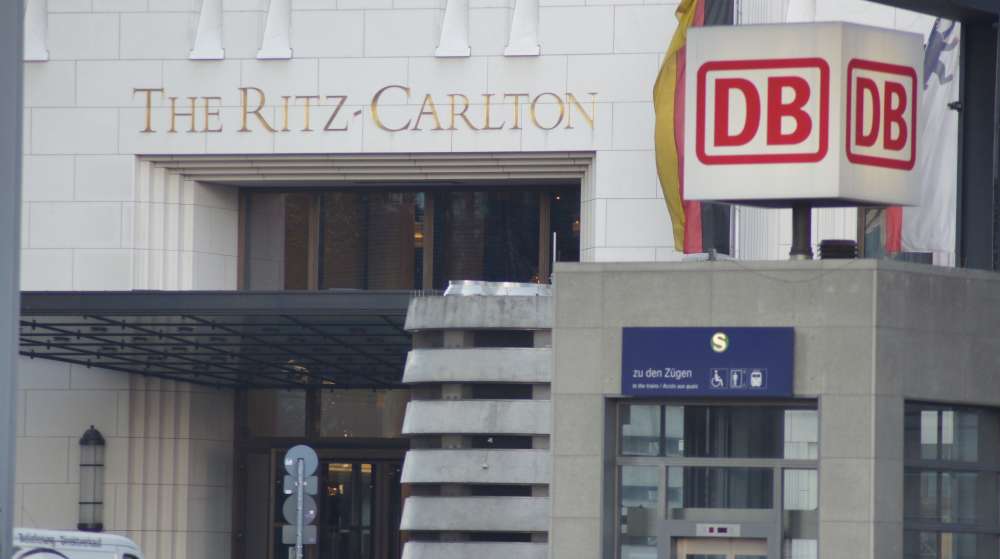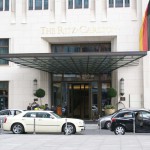The Ritz-Carlton Hotel Company, L.L.C. mit Sitz in Chevy Chase, Maryland (USA) betreibt 72 Hotels in Nord- und Südamerika, Europa, Asien, Afrika und
im Nahen Osten.
Zurzeit befinden sich über 30 Projekte weltweit in Entwicklung, darunter Eröffnungen in Shenzhen (China), Krabi (Thailand), Rancho Mirage (Kalifornien) und Dubai. The Ritz-Carlton ist das einzige Dienstleistungsunternehmen, das zweimal in Folge den renommierten Qualitätspreis „Malcolm Baldrige National Quality Award“ des amerikanischen Wirtschaftsministeriums für außergewöhnlichen Kundenservice gewonnen hat.
The history of The Ritz-Carlton Hotel Company, L.L.C. originates with The Ritz-Carlton, Boston. The standards of service, dining and facilities of this Boston landmark serve as a benchmark for all Ritz-Carlton hotels and resorts worldwide.
The legacy of The Ritz-Carlton, Boston begins with the celebrated hotelier Cesar Ritz, the “king of hoteliers and hotelier to kings.” His philosophy of service and innovations redefined the luxury hotel experience in Europe through his management of The Ritz Paris and The Carlton in London.
The Ritz-Carlton, Boston revolutionized hospitality in America by creating luxury in a hotel setting:
- Private bath in each guest room
- Lighter fabrics in the guest room to allow for more thorough washing
- White tie and apron uniforms for the waitstaff, black tie for the Maitre d’ and morning suits for all other staff, conducive to a formal, professional appearance
- Extensive fresh flowers throughout the public areas
- A la carte dining, providing choices for diners
- Gourmet cuisine, utilizing the genius and cooking methods of Auguste Escoffier
- Intimate, smaller lobbies for a more personalized guest experience
Cesar Ritz died in 1918 but his wife Marie continued the expansion of hotels bearing his name. In the United States, The Ritz-Carlton Investing Company was established by Albert Keller who bought and franchised the name. In 1927 The Ritz-Carlton, Boston, opened and other hotels followed in New York (at Madison and 54th), Philadelphia, Pittsburgh, Atlantic City and Boca Raton. However, by 1940 none of the hotels were operating except The Ritz-Carlton, Boston. The hotel embodies the vision of Cesar Ritz, Yankee ingenuity and Boston social sensibilities.
The Ritz-Carlton, Boston
In 1927, Edward N. Wyner, a local Boston real estate developer, was asked by Mayor Curley to build a world-class hotel. Wyner, who was constructing an apartment building and was up to the second floor at the time, agreed and changed the apartment building into a hotel. Because of the reputation of Ritz in Europe and the cosmopolitan society in Boston, Wyner knew The Ritz-Carlton name would secure immediate success. He received permission from The Ritz-Carlton Investing Company and The Ritz Paris’ for use of the name and set out to create luxury in the heart of Boston. The Ritz-Carlton, Boston opened on May 19, 1927 with a room rate of $15.
In the tradition of Cesar Ritz, Wyner was meticulous about maintaining the privacy of his guests; a policy strictly adhered to today in all Ritz-Carlton hotels. And thus, the elite were drawn to his hotel. However, he was also very aware of the role and reputation the hotel had in the community: during the Depression Wyner kept the lights on in vacant hotel rooms to portray an aura of success.
The Ritz-Carlton, Boston was regarded as a private club for the very wealthy. Up until the 1960s, the hotel was very formal. Guests were regularly checked to see if they were in the Social Register or Who’s Who and the hotel sometimes went so far as to examine the quality of writing paper on which the guests wrote to the hotel requesting reservations (if it wasn’t of high enough quality, they were refused).
Dress codes were enforced for all guests, in great part due to the formality of Boston society. Restaurants were also very stringent with regard to whom they admitted. Women were not allowed to lunch alone in The Café. Unescorted women were not allowed to enter The Ritz Bar until 1970.
Cuisine in the hotel restaurants was created in the hallowed tradition of Cesar Ritz’s partner Auguste Escoffier. The cuisine at The Ritz-Carlton has always been classic but never boring, innovative but never trendy. The popular entree Lobster au Whiskey was served on the hotel’s opening night in 1927 and remains a favorite dinner item today.
The combination of cuisine and atmosphere ensured the restaurants were “the place” to swing, previewing such musical greats as Benny Goodman and Tommy Dorsey. The Roof closed in 1944, but was reopened to great success in the summer of 1995. Today, guests can enjoy gourmet dining and dancing under the stars to a live big band.
More plays were written or reworked at the Boston hotel than anywhere else in the United States. Richard Rodgers composed “Ten Cents a Dance” on a piano in a Ritz-Carlton suite, Oscar Hammerstein wrote the lyrics to “Edelweiss” in the shower during an overnight stay and Tennessee Williams wrote part of “A Streetcar Named Desire” while a guest at the hotel. In addition to hosting numerous famous personalities, the hotel also entertained an extraordinary number of animals including: Rin Tin Tin, Morris the Cat and Louis the Swan (the central character in E.B. White’s classic children’s book “The Trumpet of the Swan”).
The hotel maintained its own upholstery and print shops and even had a craftsman in-house whose sole job was to paint the gold stripes on the hotel’s furniture. As a result of this convenience, the hotel often catered to the whims of important guests. A suite for Joan Crawford was decorated with peppermint Lifesavers because it was her favorite candy and the guest room furniture in Winston Churchill’s room was reupholstered in red, his favorite color.
Edward Wyner died in 1961. The land developers Cabot, Cabot & Forbes and their chairman and major shareholder, Gerald W. Blakely, owned and managed the hotel. However, the Ritz legacy endured with Charles Ritz, son of Cesar Ritz, who was an active board member of The Ritz-Carlton until his death in 1977. In 1983, Blakely sold the hotel and the rights to The Ritz-Carlton name to William B. Johnson, who established The Ritz-Carlton Hotel Company.
The Ritz-Carlton Logo
The lion and crown Ritz-Carlton logo is a combination of the British royal seal (the crown) and the logo of a financial backer (the lion). This logo was created by Cesar Ritz. In 1965, Cabot, Cabot and Forbes (owners of the Boston hotel starting in 1964 after complex negotiations with the heirs of the Wyner Estate) decided that the logo of the Boston hotel dating back to 1927* was “not sufficiently noble.” They revised the logo to what is utilized today. It is interesting to note that The Ritz-Carlton hotels in Atlantic City and New York had similar logos on their hotels in the late ’20s. While in Europe at this same time, The Ritz London logo consisted of a lion and The Ritz Paris logo contained a crown.
*In 1927 when The Ritz-Carlton, Boston opened, it had obtained permission to use the name from The Carlton Investing Company of New York, which was licensed by The Ritz Hotels Development Company, Ltd. of London, England.
The Cobalt Blue Goblet
Many of The Ritz-Carlton hotels and resorts worldwide continue to set their tables with the signature cobalt blue glasses. These goblets were designed to match the blue Czechoslovakian crystal chandeliers in the original Dining Room in The Ritz-Carlton, Boston. Coincidentally, blue glass was considered a status symbol in 1920s Boston. Window glass imported from Europe underwent a chemical reaction when hitting the Boston air and turned blue. Blue glass windows meant the homeowners could afford imported glass. The Ritz-Carlton, being quite fashionable, ordered glasses in this color.
Stand: Juli 2013








